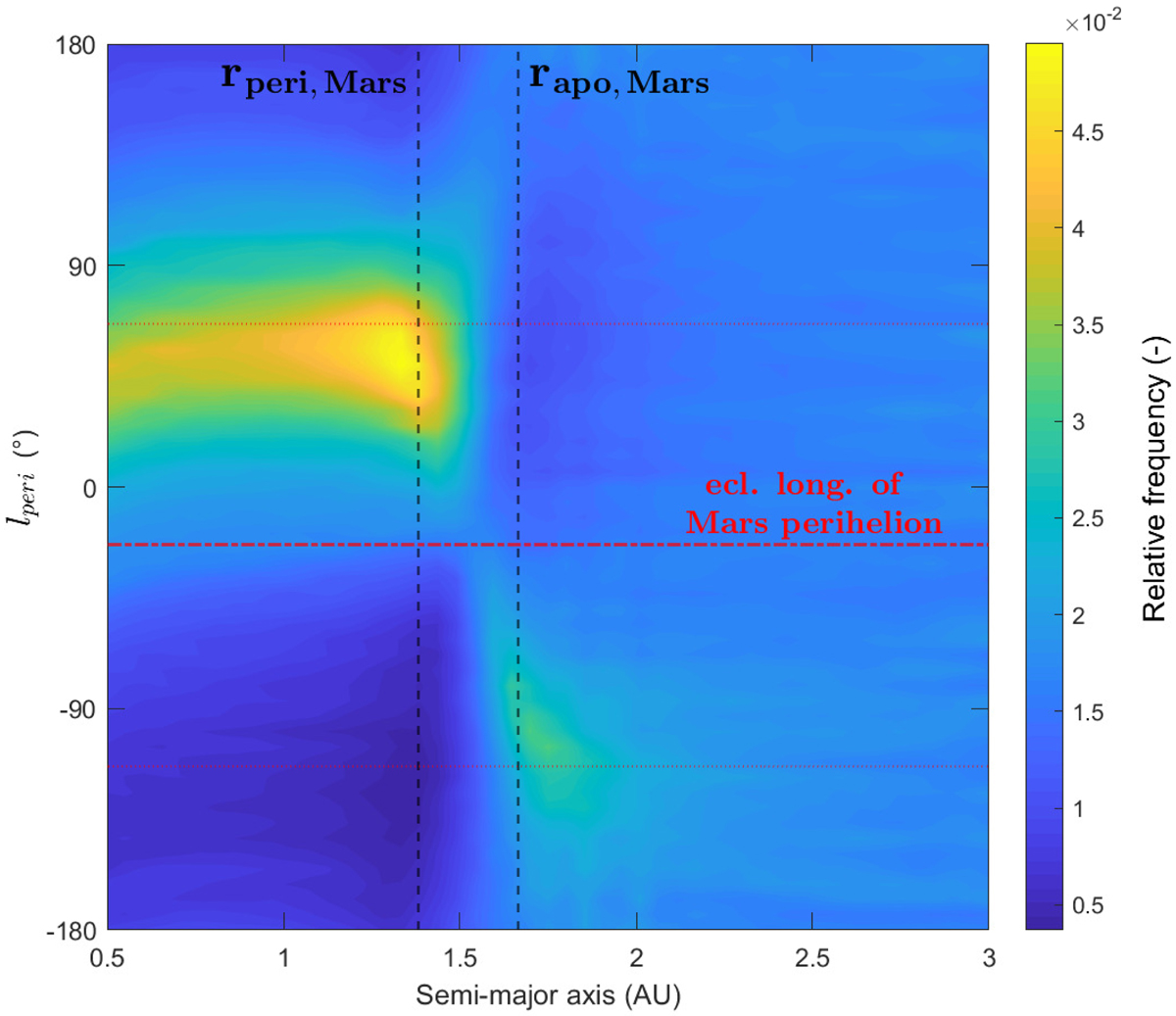Fig. 13.

Relative frequency of the ecliptic longitude of particle perihelia (lperi) recorded at semi-major axis bins of 0.05 au (no planets but Mars present, β = 0.005). The relative frequency is given for 60 bins in lperi, thus a frequency of 1.67 × 10−2 in each bin implies a uniform distribution. The ecl. long. of Mars’s perihelion (lperi, Mars) is indicated by the red line, as are lperi, Mars ± 90°. Mars’s perihelion and aphelion distances are indicated by vertical lines. Particle perihelia are equally distributed when in a semi-major axis range from 3 au to 2.5 au. As semi-major axis decreases, perihelia first gravitate towards lperi, Mars + 90°, followed by a stronger attraction towards roughly lperi, Mars − 80° once semi-major axis passes Mars’s aphelion distance. Migrating further, the particles’ apse line alignment relaxes again.
Current usage metrics show cumulative count of Article Views (full-text article views including HTML views, PDF and ePub downloads, according to the available data) and Abstracts Views on Vision4Press platform.
Data correspond to usage on the plateform after 2015. The current usage metrics is available 48-96 hours after online publication and is updated daily on week days.
Initial download of the metrics may take a while.


